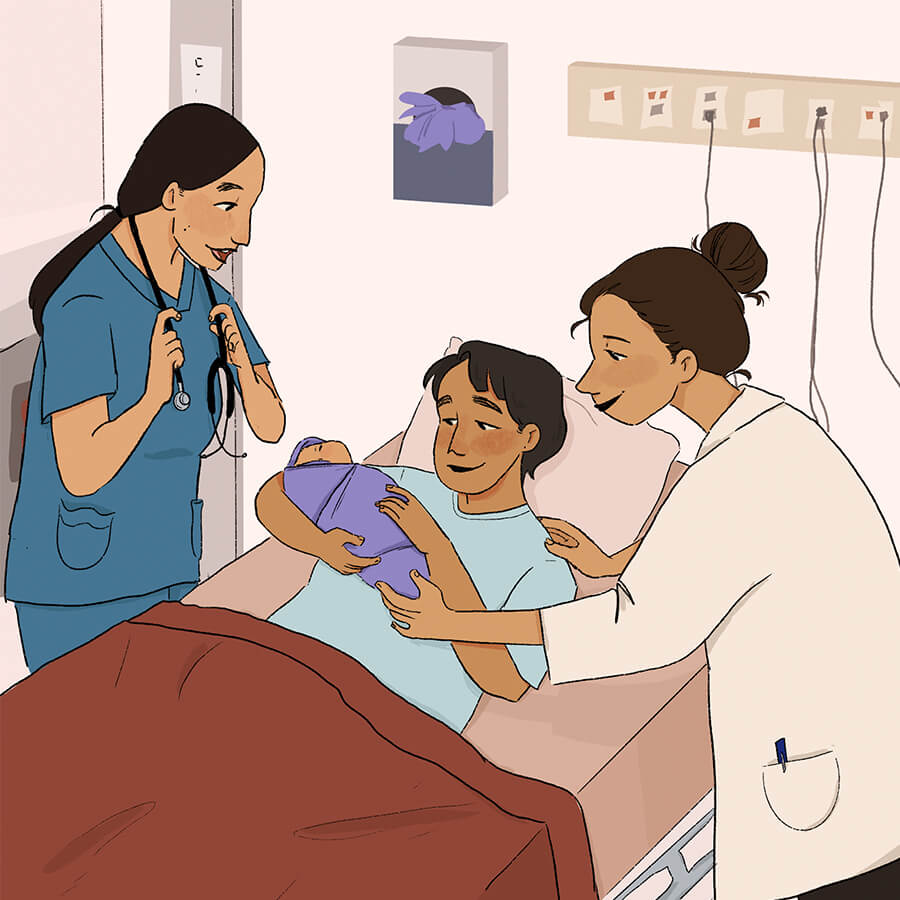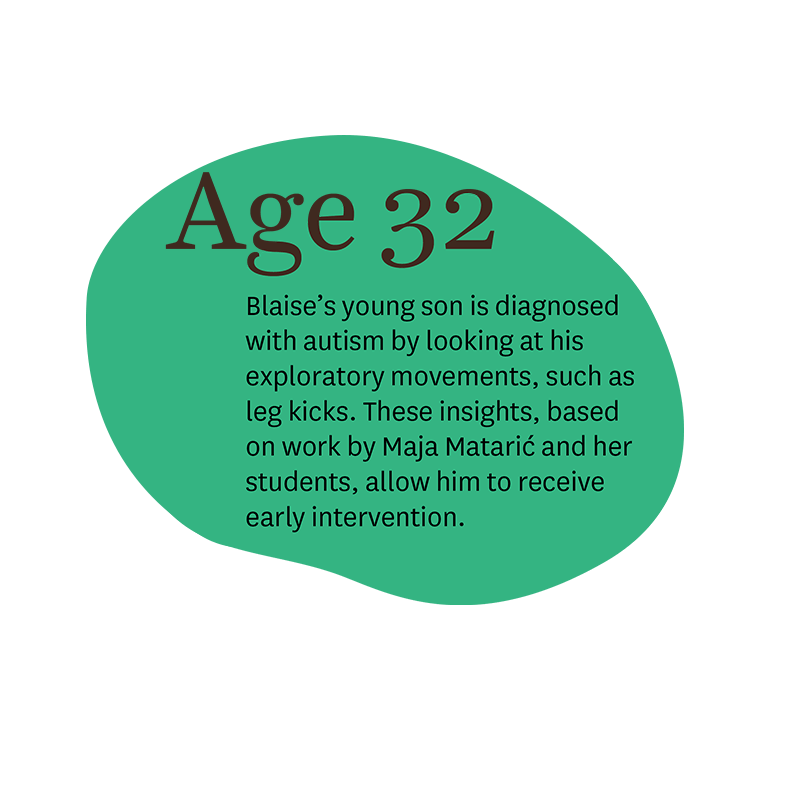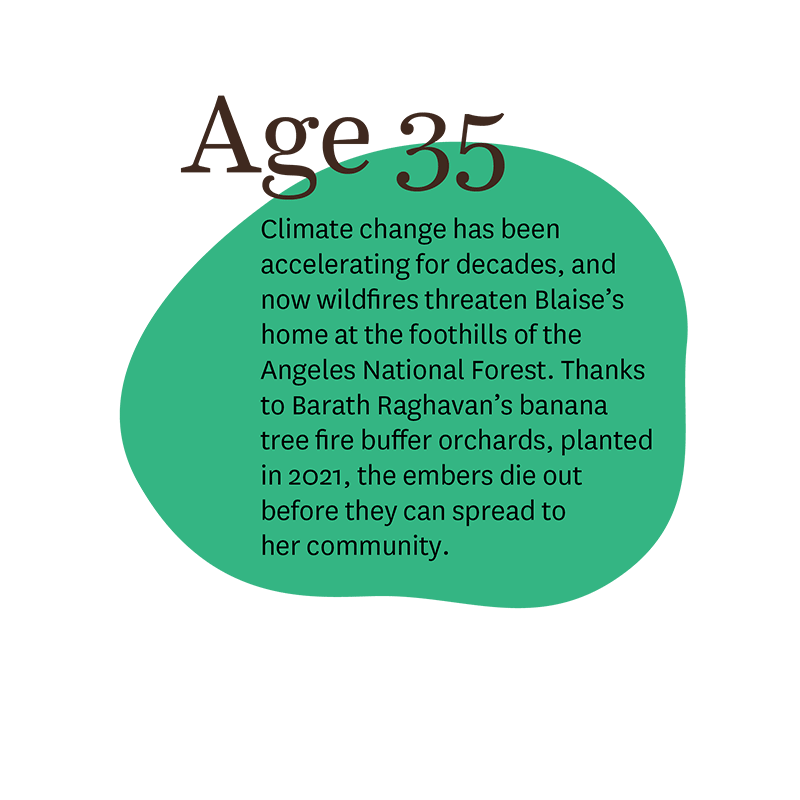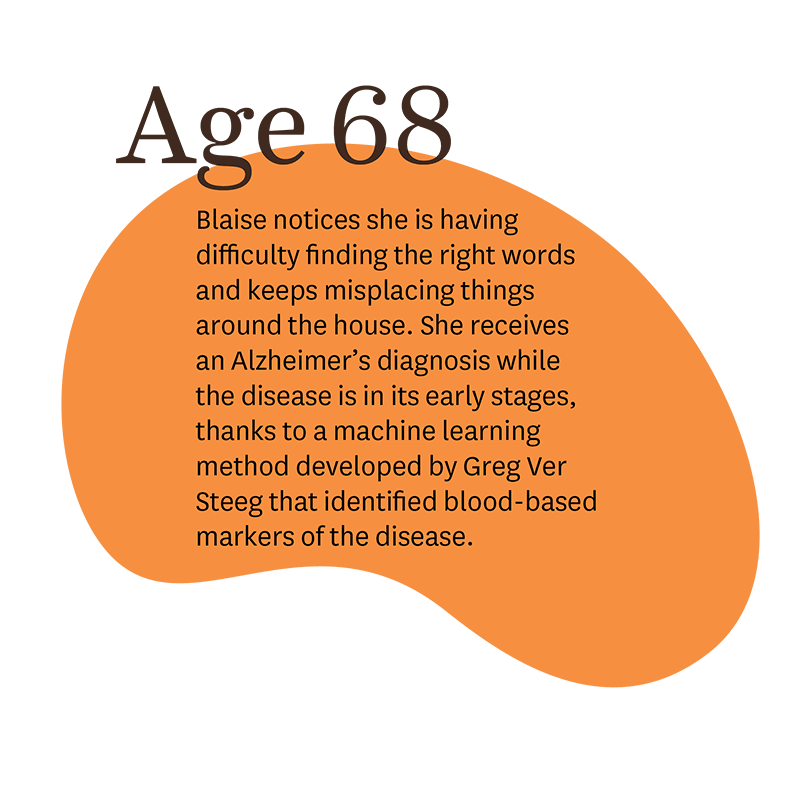A Life Less Ordinary
Computer science plays a role just about everything in our lives, from the cars we drive to the movies we watch and the many ways we interact with each other every day. In this timeline, we follow one “human of the future” through childhood, adulthood and into old age via critical moments that could be touched by technology developed at USC Viterbi.
By Caitlin Dawson/Illustrations by Shutianyi Li and Adriana Sanchez
BLAISE INGENIUM ARRIVES in the world on a balmy fall day in Los Angeles. The year is 2030. It’s been 10 years since the world was seized by the COVID-19 pandemic. Humanity has since innovated, adapted and progressed. Everything feels familiar yet different. In Blaise’s lifetime, self-driving cars will become mainstream, haptic technology will allow us to hug loved ones from afar, and quantum computers will discover new drugs to treat debilitating diseases.






































